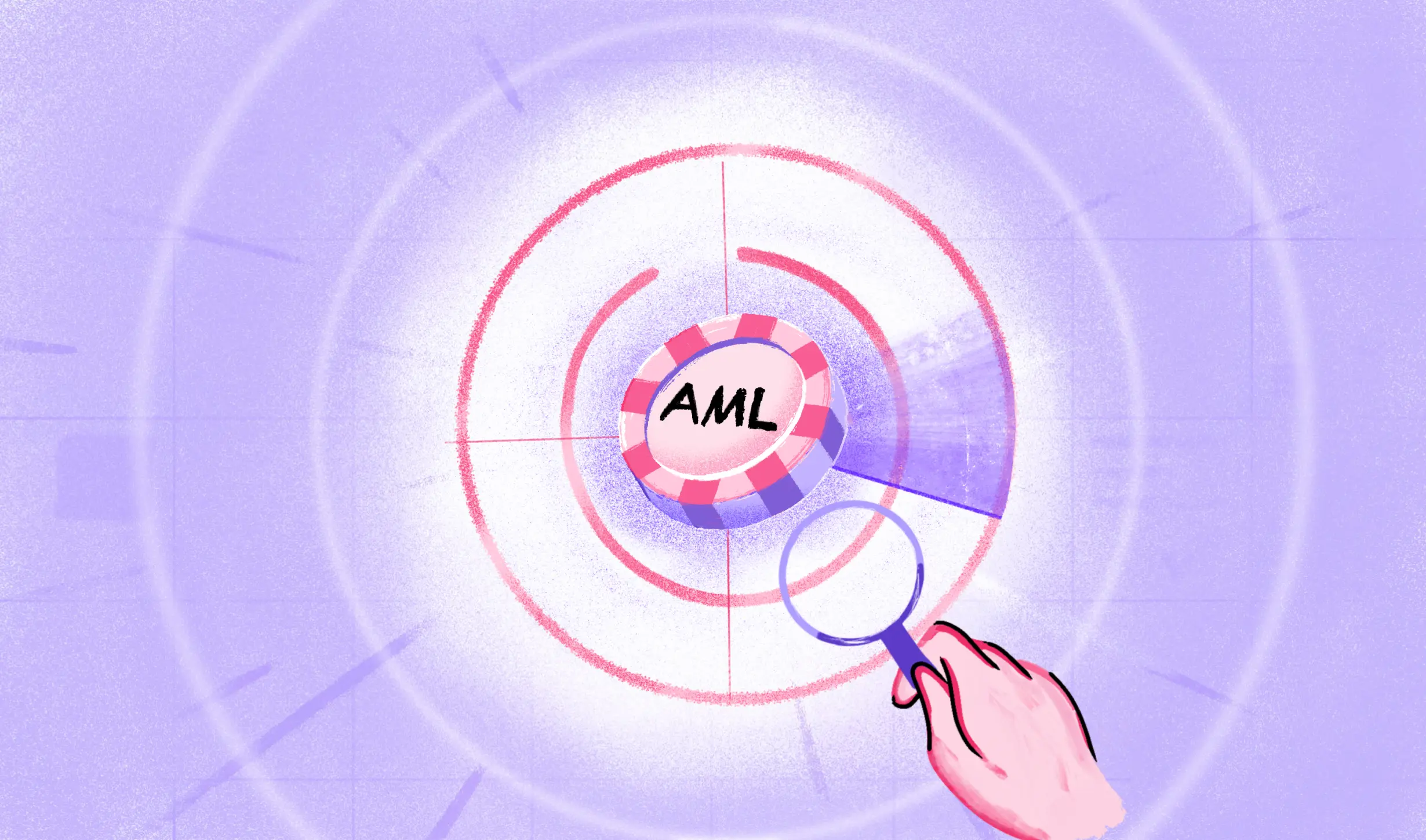An Anti-Money Laundering (AML) compliance program is essential to prevent money laundering. A strong AML compliance program may be able to stop a business from unwittingly aiding and abetting criminal activity, as well as having a positive effect on the public perception of the brand.
While the concept of anti-money laundering seems straightforward enough, the actual implementation can be much more complex than one might expect. This article will outline essential components for building an effective AML compliance program.
What Is AML?
An AML compliance program (Anti-Money Laundering) is a set of policies and procedures that a financial institution, including banks or broker-dealers, must put in place to ensure compliance with the Anti-Money Laundering laws.
The estimated amount of money laundering globally in one year is 25% of global GDP or between US $800 billion and $2 trillion.
An effective AML Compliance Program helps prevent money laundering and the financing of terrorism by detecting, monitoring, and reporting suspicious activities.
AML Regulations
Financial institutions must build effective customer due diligence procedures to identify money laundering risks and detect suspicious transactions in order to comply with AML laws.
Different countries have different laws and regulations regarding AML compliance.
The European Union published the Fifth Anti-Money Laundering Directive (5AMLD) and the 6AMLD which aimed at imposing stringent penalties on those convicted of money laundering.
Likewise, the BSA – The Bank Secrecy Act in the USA focuses on money laundering and terrorism financing.
The Singapore Monetary Authority (MAS) and the HKMA – Hong Kong Monetary Authority are key AML Regulators in Asia to fight money laundering by ensuring that financial institutions comply with the necessary AML requirements.
What Is CTF Under KYC?
In compliance with Know Your Customer (KYC), banks, financial institutions, and other financial services companies verify the identity of their customers. KYC is an integral part of customer due diligence (CDD) requirements mandated by regulators and other supervisory bodies.
KYC/AML/CFT guidelines seek to prevent criminals from using banks for money laundering or terrorist financing.
Three Stages Of Money Laundering
Money laundering generally involves three stages: placement, layering, and integration.
- Placement
Placement is the first step in money laundering. It is the process of transferring money to legal sources such as financial institutions, casinos, and financial products while hiding the source of the funds.
This is the most vulnerable stage of money laundering as criminals keep a large portion of their money and deposit it into the financial system, which can attract the attention of law enforcement agencies.
- Layering
The second step is “layering,” also called “structuring.” Breaking down funds into smaller transactions makes detecting money-laundering activities more difficult.
This is usually accompanied by the international movement of funds, making it difficult for law enforcement agencies to seek monetary gain from illegal actions.
At this point, the funds move around the world electronically and are traded in foreign markets. When money enters the financial system undetected, criminals usually turn the cash into assets. Income can be in the form of bank checks or money transfers. And funds can also be used to trade stocks and currencies in other markets.
- Integration
Integration is the final stage of the money laundering process. The money is integrated into the offender’s legal, financial accounts.
This, like the previous steps, usually involves a series of smaller trades. For example, this money could buy expensive goods such as jewelry or real estate. Luxury goods can be sold, and the money earned is legally left behind.
Read more: What are the three money laundering stages?
Why should businesses maintain AML Compliance?
AML compliance is critical for any organization for preventing financial crimes and fraud. By collecting the required customer information and conducting a background check, businesses make sure to monitor as well as prevent any suspicious activity that might prove to be a potential threat. Banks are not the only organizations that are at risk due to money launderers. Businesses in several domains are at risk of financial fraud therefore it is important to maintain proper AML compliance to prevent such cases.
Many companies that fail to comply with the required regulations might even face legal action. That is why it is necessary for your company to maintain the required AML Compliance for managing any company risks.
Key Components Of An AML Compliance Program
- Detecting Suspicious Activity
Identifying and preventing money laundering is one of the most crucial objectives in an organisation.
Money laundering can be prevented by monitoring large sums of money going into a company’s account, inconsistencies in information provided by a customer to open an account, or fake information provided in an application.
The assessment of money laundering and terrorist financing activities can help banks sort risky customers into various threat levels based on their credentials.
Banks should note various parameters in this regard, including high-risk countries, politically exposed persons (PEPs), due diligence reports, ultimate beneficial owners (UBOs), etc.
Banks should determine the due diligence process, which must be relevant to the AML regulations of the bank’s country of operation.
- Internal Practices
Each financial entity must have procedures to ensure that it and its customers are compliant with relevant regulations. These procedures must be based on the due diligence process.
- Self-Directed Due Diligence Report: Financial institutions’ due diligence procedures must meet their compliance requirements and their customers.
- Define Roles And Responsibilities: An AML compliance officer must be appointed within an organization to handle money laundering and terrorist financing issues.
- Reporting Suspicious Activity: Management must be notified when suspicious activity is observed. If the action is considered severe, management should inform an appropriate financial regulatory authority or escalate the matter to the board of directors.
- Training Programs To Recognize ML & TF Activity: When a money laundering or terrorist financing activity occurs, employees need to know what to do and be trained to report it.
- Prevention Against Criminal Activities
Staff training should be carried out to ensure that all compliance officers know their responsibilities and liabilities with the AML/CFT Act.
All personnel in the compliance department and all officers who deal with clients (such as sales and customer service representatives, loan officers, brokers, investment consultants, receptionists) should be trained in anti-money laundering law.
Training Topics:
- The importance of preventing financial crimes
- The anti-money laundering rules
- An overview of potential fines for non-compliance with anti-money laundering laws
Training Means:
- Presentations and webinars
- Online forums and follow-up tests to assess understanding of anti-money laundering policies
- Staff meetings and discussions on current topics
- Independent Audits
A compliance audit is an independent assessment of a firm’s anti-money laundering procedures and risk assessment policies. Auditors can use previous reports to compare the effectiveness of implemented plans.
An independent assessment can detect AML law violations and help you identify and address areas of weakness to maintain your financial well-being better.
Factors to keep in mind when drawing up AML Compliance standards
In order to create a compliance program best suited for a company, one needs to identify all potential risks and legal restrictions.
The type of money laundering risks a business is exposed to, suspicious activities in the business that need monitoring, and the internal policies and security guidelines of the company are some of the important factors that need to be considered while drawing up the AML Compliance standards. Besides these, there might be several laws and regulations regarding non-compliance-related fines that a company must also keep in mind before setting up its AML Compliance standards.
A Compliance Officer with well-defined roles and responsibilities plays a key role in ensuring all AML Compliance standards are followed and conducting regular checks for the same.
To Wrap Up Things
Money laundering activities cost 2% to 5% of global GDP.
While some components of an AML compliance program will differ slightly depending on your industry or the nature of your business, these five key components should be present in any compliant AML compliance program.
If you would like to learn more about creating a solid AML compliance program for your organization, check out HyperVerge’s AML solution or sign up for a demo now! We’ll be happy to help!

 US
US
 IN
IN









